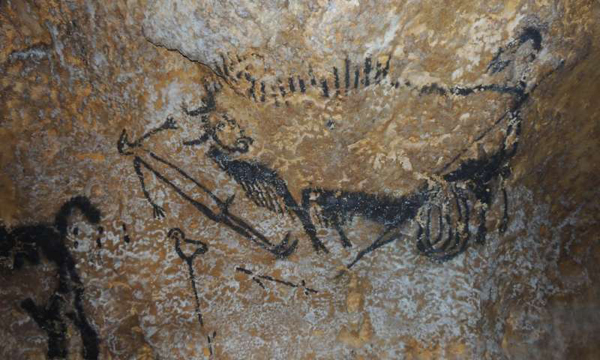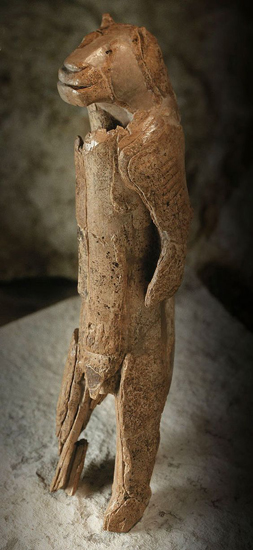Prehistoric Cave Art Reveals an Understanding of Astronomy
Cave Paintings Indicate a Link with Complex Astronomical Measurements
Scientists have decoded some ancient (Palaeolithic and Neolithic), cave art and found consistent links which indicate that Stone Age people had an advanced knowledge of astronomy. The artworks located across Europe (Spain, France and Germany, with some younger artworks studied from Turkey), are not simply depictions of animals and hunting, the wild animals that have been painted onto cave walls represent star constellations and are used to represent dates and catastrophic events such as meteor strikes.
The Famous Lascaux Shaft Cave Painting (France)

Picture credit: Alistair Coombs
This research, published in the latest edition of the quarterly “Athens Journal of History”, suggests that perhaps as far back as 40,000 years ago, humans kept track of time using knowledge of how the position of the stars slowly changes over thousands of years. The study conducted by scientists from Edinburgh University and the University of Kent, hints at the possibility that ancient peoples understood an effect caused by the gradual shift of the Earth’s rotational axis. Discovery of this phenomenon, called precession of the equinoxes, was previously thought to have occurred much more recently (credited to the Ancient Greek civilisation).
Like Signs of the Zodiac
In western, occidental science, constellations are represented by symbols such as animals, for example, The Great Bear, Pegasus, Aries and Leo. It seems this idea has roots far back into our ancestry. The researchers estimate that Stone Age people could define the date of an astronomical event according to this celestial calendar to within 250 years or thereabouts. The findings indicate that the astronomical insights of ancient people were far greater than previously believed.
One practical application of this knowledge would have been seen in navigation. Knowledge of the movements of the stars in the night sky would have aided navigation across open water out of sight of land. This new study may have implications for how we perceive human migration in prehistory.
Studying Palaeolithic and Neolithic Art
The scientists discovered all the ancient sites they studied across Europe and into Turkey used the same method of date-keeping based on sophisticated astronomy, even though the art was separated in time by tens of thousands of years.
The oldest art in the research project was the Lion-Man sculpture from the Hohlenstein-Stadel Cave, in southern Germany. This sculpture is believed to have been created around 38,000 B.C. The most recent artworks incorporated into this research come from Neolithic sites in southern Turkey which are dated to around 9,000 years ago. Researchers clarified earlier findings from a study of stone carvings at one of these sites – Gobekli Tepe in (Turkey), which is interpreted as a memorial to a devastating comet strike around 13,000 years ago. The extra-terrestrial impact event is believed to have caused a mini Ice Age in the Northern Hemisphere (the Younger Dryas period).
Löwenmensch Figurine or Lion-man of the Hohlenstein-Stadel Cave (Germany)

Studying Prehistoric Art
The scientists also decoded what is probably one of the most famous ancient cave paintings, the Lascaux Shaft Scene in France. The artwork, which features a dying man and several animals (see above), may commemorate another comet strike around 17,200 years ago. The team confirmed their findings by comparing the age of many examples of cave art, known from chemically dating the paints used, with the positions of stars in ancient times as predicted by sophisticated software.
Dr Martin Sweatman (School of Engineering at Edinburgh University), stated:
“Early cave art shows that people had advanced knowledge of the night sky within the last Ice Age. Intellectually, they were hardly any different to us today. These findings support a theory of multiple comet impacts over the course of human development and will probably revolutionise how prehistoric populations are seen.”
Everything Dinosaur acknowledges the assistance of a press release from Edinburgh University in the compilation of this article.
Visit the award-winning Everything Dinosaur website: Everything Dinosaur.

